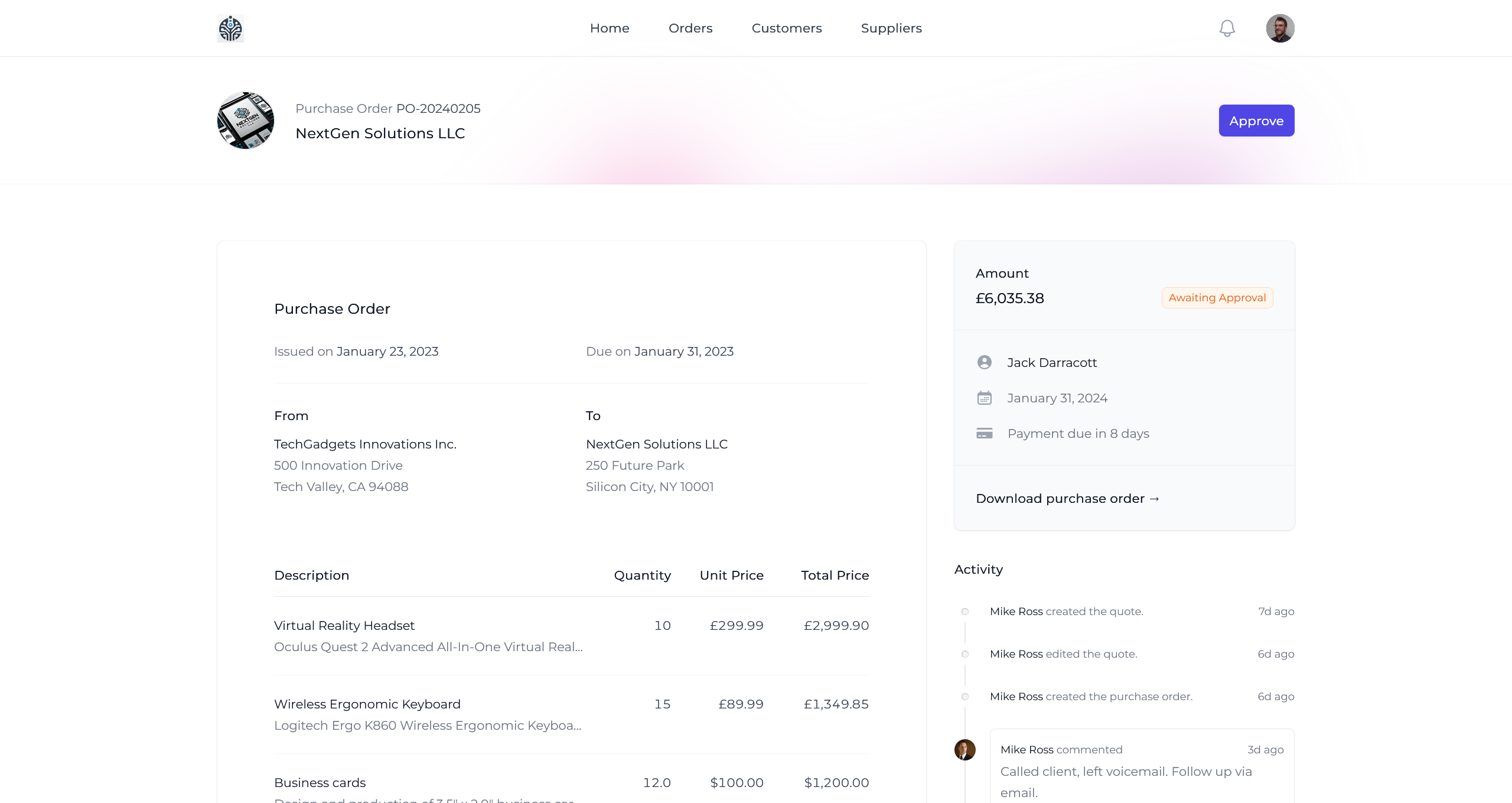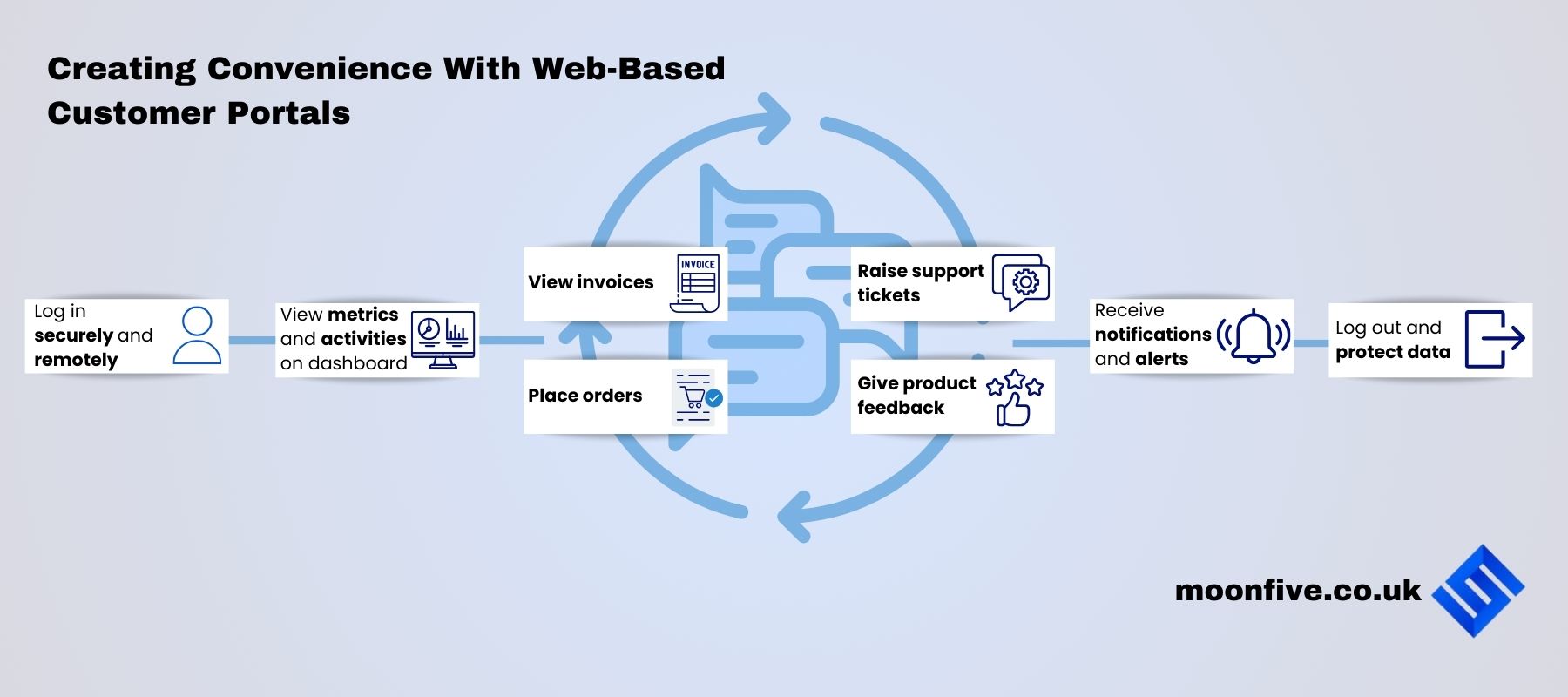Customer satisfaction and convenience should always be a top priority for businesses, so it is key that you connect with your clients effectively. Web-based customer portals are a powerful tool for enhancing customer relationships and encourage engagement with your business. In this post we’ll take a quick look at what web-based customer portals are, why they are great for business, and how you can make sure you are taking advantage of their potential.
So, What Is a Web-Based Customer Portal?
Web-Based Customer Portals, Client Portals, Online Portals, are just a few different names for these powerful online platforms that give customers direct access to a wide range of information, services, and tools related to a company’s offering. By being accessible through a web browser, they are extremely convenient and user-friendly. Clients can simply head over to your portal, log in, and instantly they can perform a variety of tasks and engage with your company.

What Does A Customer Portal Offer?
There’s plenty of great aspects of web-based portals, but a few key features include:
- Secure Access: A very important aspect of web-based customer portals to protect sensitive customer information and ensure that only the correct people are logging in. Authentication, encryption, and session management practices are just a few of the security measures that are implemented to keep things secure.
- Personalised Content: Customers want to feel special. Being able to provide them with customised content based on their preferences, purchase history or interaction with the company is a great way to achieve this, and is made very easy with web-based customer portals.
- Self-Service Options: Customers can perform various tasks independently, whenever they want, from wherever they want. Making payments, checking order status, or scheduling appointments can all be done through a customer portal, to name a few.
- Communication Tools: No more listening to the same song on repeat whilst on hold, waiting to be connected to an agent! Web-based customer portals often include messaging systems, live chat support and helpdesk ticketing systems so that customers can get in touch with ease.
- Document Sharing: Share important documents such as invoices, contracts, or product manuals, directly and securely through the portal. Rather than searching through endless emails in their inbox, or a drawer full of paperwork going back 20 years, customers will know exactly where to find all the documents they need on your portal.
- Data Analytics: Portals can also provide customers with access to relevant data and analytics, allowing them to make informed decisions.

How Can a Web-Based Customer Portal Help Your Business?
- Enhanced Customer Engagement: Customer portals are the central hub that your customers can use to interact with your business. It’s like popping into your office, except they don’t need to leave their seat. This makes the relationship more than just transactional, and will make your customers feel much more connected to your brand.
- Convenience: People love to do things in their own time, at their own pace. Web-based customer portals make this possible. Allowing customers to access information, make transactions and resolve issues whenever they choose, on a portal with all the information they need to do so, will reduce the need for phone calls and emails and greatly improve the customer journey.
- Streamlined Communication: Speaking of phone calls and emails, having a direct channel for communication on your customer portal makes it much easier to provide customers with quick answers to their questions and resolve concerns efficiently. Incorporating a virtual assistant or AI powered chat-bot can improve this further, and an FAQ section will often answer a customer’s query without the need for any human assistance, providing them with instant solutions to their problems and improving satisfaction.
- Cost Savings: By allowing customers to handle routine tasks by themselves, you can reduce the workload on customer support teams. This leads to significant cost savings by vastly reducing the need for additional support staff and resources.
- Data-Driven Insights: When customers use your portal, this generates valuable data. You can then analyse this data to gain insights into your customers’ behaviour, their preferences, and identify any trends. You can then use these insights to make better decisions, tweak your marketing strategy, or improve your products or services based on customer feedback.
Who Needs a Web-Based Customer Portal?
Unfortunately, we can’t list every use case for customer portals here, and we’re fairly sure you wouldn’t want to read that anyway, but to give you an idea, here are a few sectors that could benefit from a web-based customer portal:
- E-commerce: Customers can log in to track order, manage their cart, view order history, and receive personalised product recommendations based on their preferences. Customer portals are also a great place to promote loyalty programs and special offers.
- Financial Services: Web-based customer portals can allow customers to access account information, view transaction history, pay bills, # and apply for financial products such as loans or credit cards. Customers could also access additional financial planning tools and investment tracking, allowing for effortless expansion of a company’s service offering.
- Utilities: Utility companies provide portals for customers to view and pay bills, monitor their energy consumption, and report any issues. Companies can also easily keep their customers informed of any changes, and provide energy-saving tips and useful analytics.
- Healthcare: Web-based portals provide a one-stop location for patients to schedule appointments, access their records, and send prescription requests. Patient portals can also offer educational resources and appointment reminders.
- Software as a Service (SaaS) Providers: Clients can log in, manage their software subscriptions, access support documentation, submit tickets, and download software updates. Online portals can also allow customers to interact with each other through forums, creating a sense of community amongst clients.
So, remember…
Web-based customer portals are an extremely powerful tool. They can enhance customer relationships, streamline your operations, and allow you to stay competitive. Give your customers what they want by offering a convenient, personalised, and secure platform for them to interact with you and other customers. Build loyalty and drive engagement, and you will unlock a new world of opportunity for growth and success in your business.
If you like the sound of this and would like to find out how Moonfive can help you build loyalty and drive engagement with a web-based customer portal for your business, get in touch!

